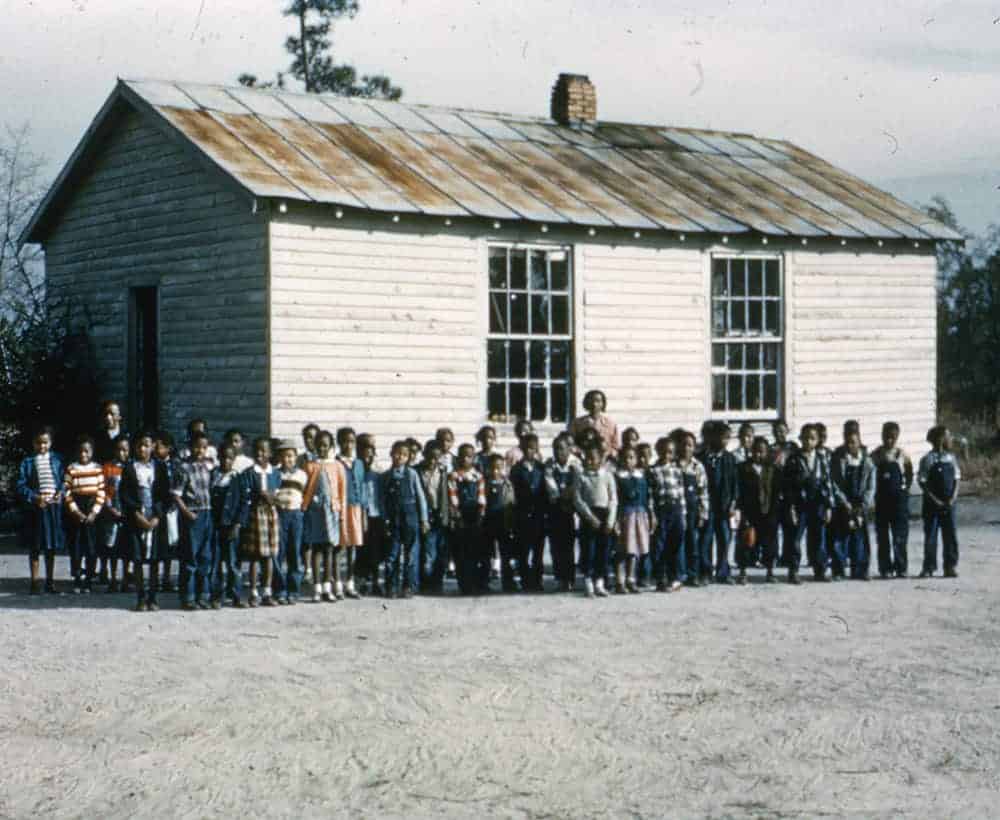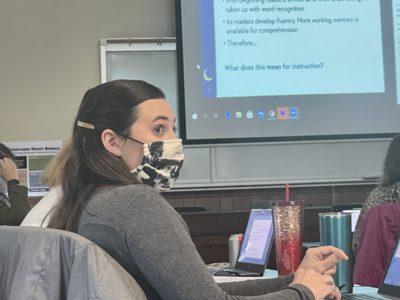
The State Board of Education adopted a Whole Child Resolution four years ago. One month ago, it adopted its Equity Resolution. Between those bookends, racial justice protests erupted across North Carolina and the nation after the killings of George Floyd, Breonna Taylor, and others.
As calls for racial justice have grown louder, and the counterprotests emerged, the State Board paused for a couple of hours on Oct. 6 to hear lessons about progress and regress in race relations in our state’s past.
The history class was the opening keynote of a three-day State Board planning meeting entitled, “Be it Resolved to Action: Bridging the Past and Present to Guide Our Path Forward.”
“As an old social studies and history teacher at heart, I believe that if the past has any virtue, it’s that it really is a good predictor of our future,” said board member James Ford, co-chair of the board’s strategic planning committee. “Past is prologue.”
The board invited state constitutional scholar Ann McColl, co-founder and president of The Innovation Project, to present a historical account of calls for racial justice in North Carolina, and the almost immediate pushback.
“The agenda that we have is designed to familiarize us with those lessons from the past in order to prepare us,” Ford said, “so that when those things come back around the curve we can make the necessary improvements.”
Takeaways on racial justice in education and reaction from the board
The board heard a historical account that sometimes felt like one step forward followed by two steps back. McColl plotted her talk around three time periods: 1865, 1901 and 1956.
“We can look at our history in education, and what those critical times were where we had choices … that would have a profound impact on our society and our children,” she said.
Regarding the first of those times, the board heard how the state emptied its education fund to pay off war debts and avoid mixing races in schools after the Civil War.
At a second point, the state became the only one to guarantee public education to all children — only to intentionally create vast disparities in funding for Black and white students.
Finally, the board heard about celebration of the U.S. Supreme Court decision in Brown v. Board of Education. It also heard how the state delayed integrating students and even passed a law that would let localities close all schools if they didn’t want to integrate them.
While this was the last historical period McColl covered, she did mention a fourth, which resonated with several board members.
“You noted that we are once again at a pivot point in our state’s journey toward equity,” board advisor Matthew Bristow-Smith said, referring to the board’s equity resolution, framework for action, and strategic plan to eliminate opportunity gaps.
“Could you foresee a time in which subsequent generations might measure our work today with the same level of historical gravity that your presentation brought today?”
McColl answered without hesitation.
Absolutely.
“I think we have a choice ahead of us right now,” she said. “We can think of this as Reconstruction 2020. … It’s just an extraordinary time, and I’m confident that historians will look back to 2020 and see how people chose to act.”
As she began her presentation, McColl asked board members to note the intent of white supremacists, a term many of the state’s white leaders of the time actually used to describe themselves.
“It didn’t just happen,” McColl said of the inequitable practices of the state’s past. “So if we want to do the opposite, if we want to seek equity, we have to do it with at least the same level of intention.”
1865: Giving voice to educating all, but discriminating in action
In a report to the General Assembly in 1955, as part of what we call the Pearsall Plan, a legislative document reads:
“The white race has been almost wholly responsible for the creation, development and support of an educational system that has been and is now educating the negro children of the state — all of them.”
This is the history as told in our state government documents.
“Factually, it’s wrong,” McColl said.
Historical records reveal that the genesis of North Carolina’s emphasis on education — for all students, not just Blacks —comes from a coalition of freedmen in 1865, that coalition’s elected president, and a reverend sent to North Carolina to support freed slaves.
Before abolition, educating any enslaved person in North Carolina was a crime punishable by 39 lashes.
After the Civil War, when it became legal to educate Blacks, the state raided its education money — called the Literary Fund — to pay off war debts. It also got rid of its only state-level education position, the state superintendent.
These moves were, in part, a response to the prospect of funding the education of Blacks and mixing races in schools, McColl said.
Two men in particular — J.W. Hood, a Black missionary from New Jersey, and Samuel Stanford Ashley, a white missionary from Massachusetts sent to help settle freed slaves — pushed for an emphasis on education.
Hood spoke often about the importance of education, from his time as president of the 1865 coalition of freedmen through his time as a delegate to the 1868 state constitutional convention. Ashley pushed for education to be included in our constitution’s recitation of rights, and helped shape the language guaranteeing every child a “sound, basic education” — language known well today because of the Leandro case.
Although it was a Black man and an advocate for civil rights who spearheaded the idea of education, among the chief beneficiaries at the time were poor, white children.
Once the literary fund had been emptied, white families with means sent their kids to private schools. And the new schools for free Blacks remained open, run by churches and Northern philanthropies. Six were established by Ashley.
But poor, white children were left in the lurch. In fact, in the monthly reports from one of the Ashley schools, an author writes about poor whites who would come to the Black schools to learn because they had nowhere else to go.
Until the 1868 state constitution was enacted.
1901: Voter disenfranchisement and the formation of local tax districts
The 1868 constitution didn’t separate education by race, a credit to Hood’s advocacy. But that soon changed — during a time, McColl said, when white supremacists intentionally sought inequity.
By 1875, white supremacists made up a majority of the legislature. The state ratified 30 amendments to the state constitution, including an amendment to separate students by race. That measure was taken 21 years before the U.S. Supreme Court would uphold segregation in Plessy v. Ferguson.
Another major initiative by elected leaders was disenfranchisement of Blacks. From 1880 to 1896, Blacks in North Carolina were actively voting. In fact, 98% of eligible Black voters cast a ballot in 1884.
But as a result of voter intimidation, districts redrawn to concentrate the Black vote, scare tactics and outright violence such as the Wilmington Massacre, and an added literacy test, by 1904 the Black vote was at 0%.
The literacy test requirement — which still exists in our state constitution despite being nullified by federal law — included a grandfather clause. Anyone whose descendants could vote was exempted, and anyone who came of age after 1908 had to be able to read and write to vote.
Because white children eventually would need to pass the literacy test to vote, there was a push for educating them. Local governments started special tax funds — local tax districts — to supplement state education funds.
They were instituted in communities with means to pay the tax — so, mostly white areas. In 1899, there were seven of these. By 1915, there were 1,534.
This exacerbated already-unequal state funding between the races in education. In 1910, the state spent $5.27 per white student and $2.02 per Black.
“As a matter of history, we always want to know, how did this happen?” McColl said. “Was this an unintentional consequence of how something was structured? Or was it a seeking of intentional inequity?”
It was intentional.
She pointed to a letter from the state superintendent of that time, J.Y. Joyner. He wrote that the “negro school” could be run for much less and that “if quietly managed, the negro will give no trouble about it.”
1956: Supreme Court says separate is unequal, but Pearsall sees it differently
Education in the state was segregated with disparate funding from then on. In 1954, when the Supreme Court held “separate but equal” to be unconstitutional in Brown v. Board of Education, the possible victory for Blacks in North Carolina was swiftly doused.
The NAACP called on North Carolina to integrate its schools. In response, an anatomy professor at UNC named Wesley Critz George wrote a paper claiming the races were biologically different and warning of the potential danger of integration.
Amazingly, George began his paper by saying he had many Black friends. Almost as astounding, George was not a physician — his doctorate was in zoology.
His paper drew support from many prominent North Carolinians, including the chair of the General Assembly’s finance committee, the assistant attorney general, and then-Governor Luther Hodges.
In 1955, after Hodges became governor, the state enacted the Pupil Assignment Act, which provided for the voluntary separation of races in schools. It provided local districts the authority to shut down entire school systems if forced to integrate.
The report that eventually formed the foundation of the law included a second option: publicly funded grants to enroll in non-sectarian schools, to avoid sending a child to an integrated school.
“Something we would probably now call a voucher,” McColl said.
Moving forward with racial justice in education
McColl reported on attempts to rewrite history to favor white supremacist viewpoints and the intention with which white supremacists acted. Throughout, she presented examples of progress followed by pushback.
Discussion after her two-hour presentation centered on a need to act, and how. Ultimately, several board members said, the body will be judged on its actions.
Board member Reginald Kenan reminded the body that conversation is also an action, though he clarified that he meant productive discussion rather than simply talking.
“We’ve got a chance to decide: Do we want to be like those folks many years ago, or do we want to make a difference? … And that’s the question I think we deal with today,” he said.
“Unless we begin to have these discussions, like we’re doing today and a lot in the last few months, I think not much progress is going to be made in race relations. We have to begin to communicate, begin to talk it out, begin to understand one another.”
Recommended reading



